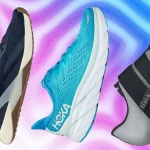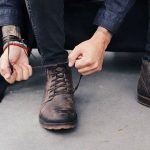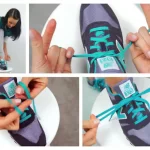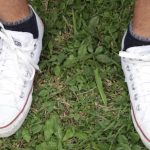You might ask why we need this article to tell us which shoes work for heel strikers. After all, doesn’t that include most running shoes?
If only it was that easy. More than just a cushioned heel makes for an unfriendly running shoe.
There are other underrated aspects of running shoes such as the heel-to-toe offset, rearfoot stability, and midsoles that promote smooth landings. How do these factors help? We’ll take a closer look now.
A high heel-to-toe offset
When considering the height difference between the front and back soles of a shoe, we find that it is defined by what is called its drop. It has been found that when looking at heel-strikers, there tends to be an ideal range for this drop being anywhere from 5mm-10mm.
A high heel-to-toe offset tends to imply that the rear of the shoe is thicker than the front. That results in greater levels of cushioning while also providing a comfortable landing surface for feet when they’re coming down from a jump or other movement. It’s important to remember though, that this doesn’t just apply to running shoes – this may be true for all sorts of athletic footwear, including things like skateboarders’ shoes or snowboarders’ boots.
Just remember that the so-called rule is not a blanket generalization, but it does increase the odds of running shoes being foot friendly. Most runners including those who wear low offset shoes like the Saucony Kinvara 13 will do just fine.
A supportive rearfoot
Not all foot-beds are created equal. For those who take the first step during the stride, they need to feel stable.
The midsole should have a neutral ride character with minimal cushioning bias. In other words, one side of the midsole should not be excessively softer than the harder.
This is the reason why this article doesn’t include models such as the Nike ZoomX Invincible. While they are very good sneakers, they do not provide stability and support when walking or running. The New Balance Fuelcell Rebel 2 is an exception because its midsoles aren’t too thick, making it comfortable to wear while taking long strides or even sprinting.
A beveled heel edge
A shoe with an angled heel, also known as the ‘heel spring’, reduces stress on the joints and impacts, preventing injury; it also has a segmented crash pad for softer landings.
Not all of the shoes included in this guide feature an articulated landing zone, but we’ve done our research and compiled them anyways.
Running shoes from the stability category are excluded. The Kayano Lite 2 does not count because it is a supportive neutral trainer instead of the medial posted one that the Kayano 28 is.
We also didn’t list down low-profile trainers for tempo runs. If you’re interested, we recommend the excellent Adidas Adizero Adios 6 or even the Brooks Hyperion Tempo will do just fine.
Nike Air Zoom Pegasus 39
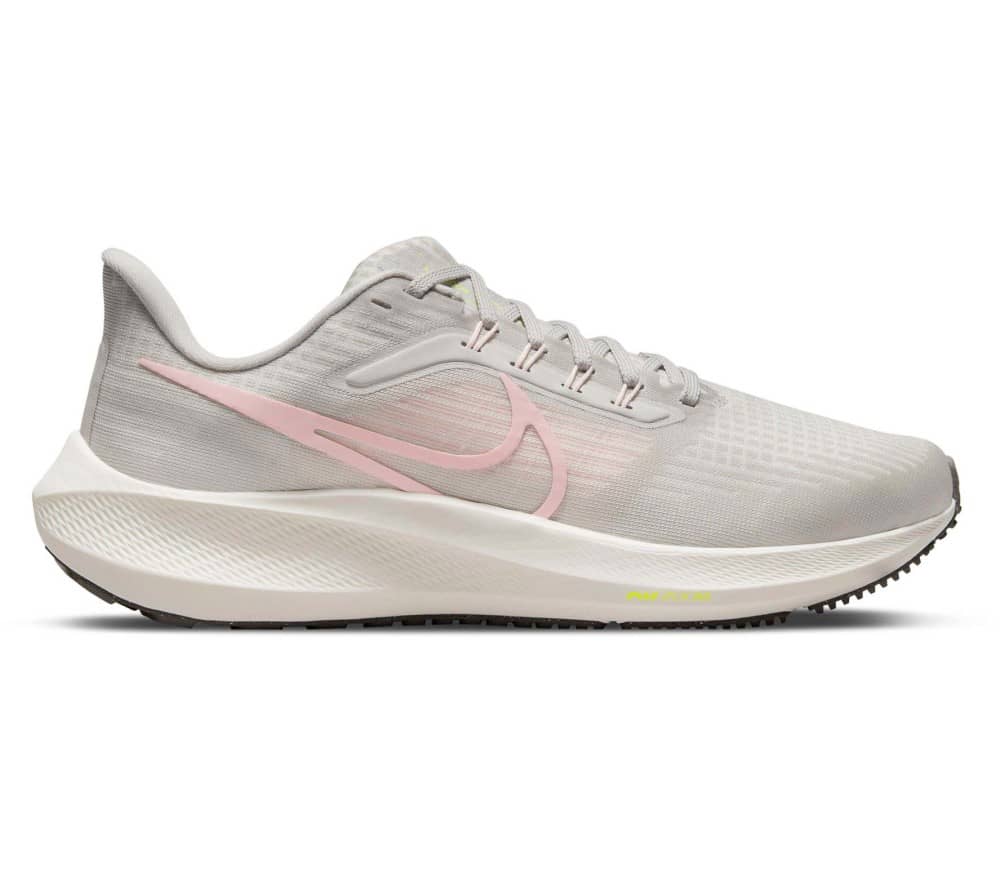
The Pegasus 37-38 were good but not great, which means there was plenty of room for improvement. Luckily, the addition of new technologies such as a softer React foam and newly designed Zoom Air bags made this happen.
Unlike the Pegasus 38, the Pegasus 39 has a heel Zoom Air that provides for a more level-headed ride. It’s also better for rearfoot strikers because of its soft React foam which delivers great cushioning for landings. Midsole is well-padded but not biased towards one kind of foot strike.
Those who switch out their Pegasus 38s for the 39s will feel that they are taking a step up in quality. Not only does it have a full sleeve of material at mid-foot to toe box, but also the spacer mesh lining provides added comfort.
Asics Gel-Cumulus 24

It’s not just about the rapid-fire release of innovative running shoes, but even their existing models are getting a lot more than superficial annual updates.
Take, for instance, the Asics Cumulus. The latest version – the 23- is excellent as well as the 24th.
The new Cumulus 24 is an incremental improvement over the previous model, and that’s a good thing because of how capable the previous model was.
Not only is the Cumulus 24 brand new from the start, but it also offers an experience that feels more lively than its predecessor – thanks to the Flytefoam Blast midsoles. This change isn’t all too different from what you’ll find in other shoes of Nike’s shoe line such as the Nimbus 24s.
The 10mm heel offset of the Flytefoam midsole provides support when you land, as well as making it easier for you to transition between walking and running. The new outsole’s rounded grip edges are easy on your foot during transitions too.
The soft upper of the shoe is true to size. The Cumulus 24 also includes an inner sleeve- a design change that was absent on the Cumulus 23. My review will dive into how this small change makes all the difference for this shoe in particular, but first let me tell you about what distinguishes this model from its predecessor.
Reebok Forever Floatride Energy 4
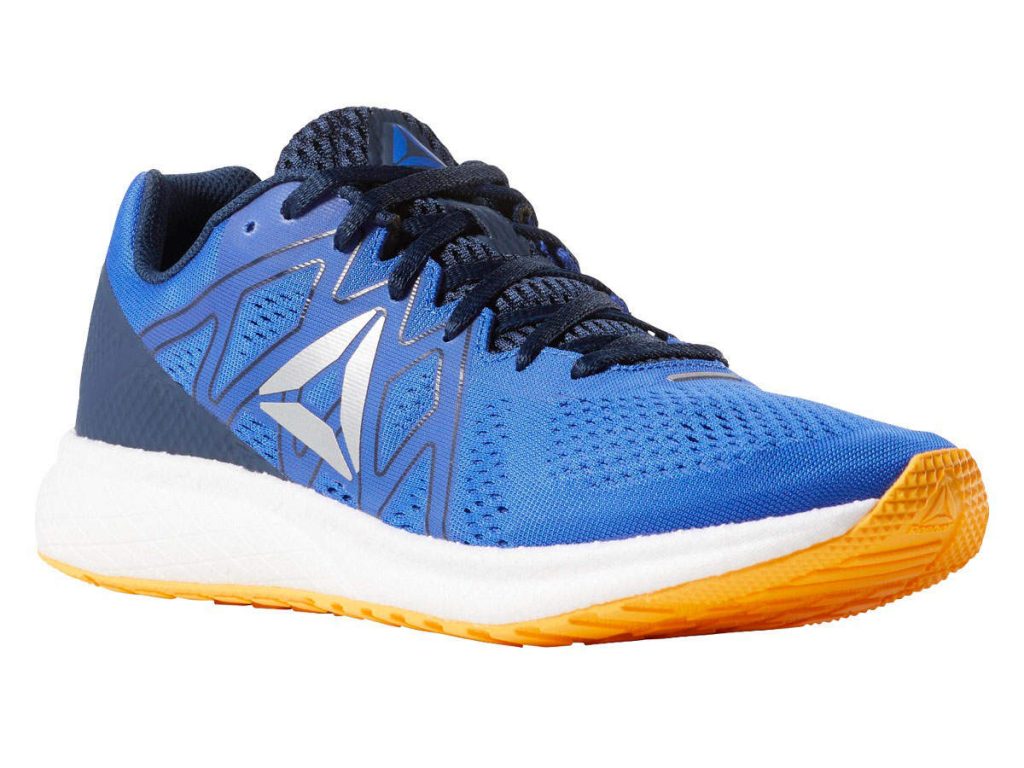
Even with an increased Polyurethane midsole, the Reebok Floatride Energy 4 does not provide much rearfoot cushioning.
The ride experience is a moderate one. Neither the cushioning is too hard or too soft, and it protects you from all sorts of impacts.
Making that happen is a resilient yet thin Polyurethane foam layer called Floatride. The deep denseness of the midsole is perfect for fast or slow heel landings. As an added feature, there’s plenty of stability as well.
Also, the Forever Floatride is a very durable shoe. That’s a lot of miles per dollar if you consider the $110 retail price. Well, but it used to be a $100 shoe, so if you can find the V3 for cheap, get it. Both the Floatride 3 and 4 share the same midsole, so you won’t miss anything new – because there isn’t any!
Brooks Glycerin 20
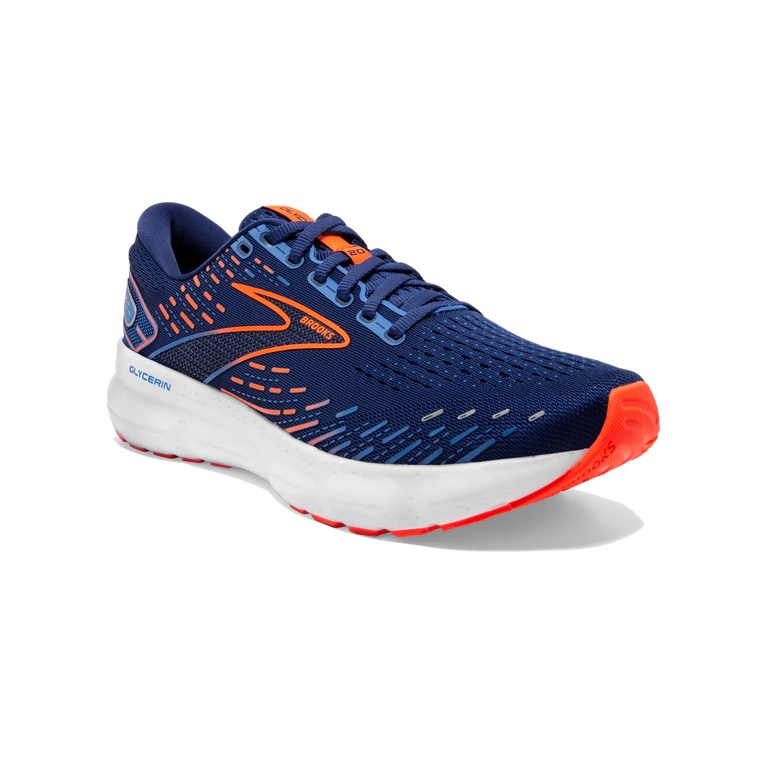
If you’re looking for a comfortable shoe without compromising stability, then the Glycerin 20 from Brooks should be of interest.
Ignore the adjective-laden product literature. The Brooks DNA Loft V3 foam is not as soft as Brooks claim it to be. It’s just a modified version of what the Hyperion Tempo uses – Nitrogen infused EVA foam with a firm undertone. And by the way, this foam is called ‘DNA Flash’ on the Hyperion Tempo and Hyperion Elite.
The Glycerin 20’s Midsole provides a soft but stable ride with ample support at the back and front of my foot.
The Glycerin’s footbed usually has a rounded heel for easier touchdown but the 20 stays true to its name by keeping it at 11. A contoured heel bevel and split crash pad combine forces to create soft landings on heels.
This model of shoe doesn’t have an inside lining, which means that it is less constricting and easier to wear than the Glycerin 19.
Asics Gel-Kayano Lite 2

Some brands excel at particular things. New Balance does widths really well. Nike has been a key player in the game of shoe innovation for many years now.
One thing that Asics does well is provide foot-cushioning at the back of the shoe, which can be seen in the Kayano Lite 2.
The Kayano Lite 2 shoe appeals to rearfoot runners because it has a 10mm offset midsole which puts most of the Flytefoam stack below the heel. This gives a comfortable landing for those who run on their heels.
The flare at the side of the shoe also makes it very supportive – providing a wide area for your foot to land.
Though the Kayano Lite has an internal Gel pad, it wears like a runnng shoe with its single density foam midsole. The heel-to-toe loading feels smooth while still being supportive enough – whether you’re heeling or fotting strike.
The mesh exterior was soft and smooth while the padding at the tongue and heel gave it a secure yet comforting feel.
Final Thoughts
In this article, we reviewed and provided recommendations for the 10 best running shoes for heel strikers. Additionally, we broke them down into different categories so it will be easier to make a decision based on what type of shoe you need. If there is still no clear winner at this point, our recommendation would be the ASICS Women’s Gel-Kayano 28 if you are female.
On the other hand, HOKA ONE ONE Men’s Bondi 6 shoes are worth considering for their Meta-Rocker Technology which supports your natural running form providing a smoother transition when landing on soft surfaces.

